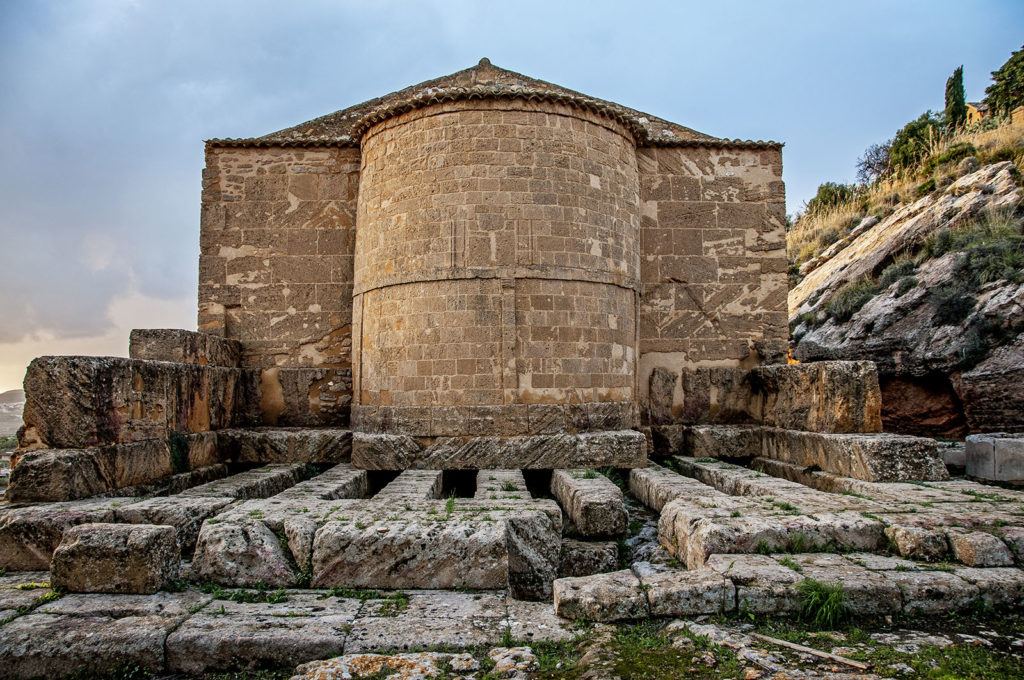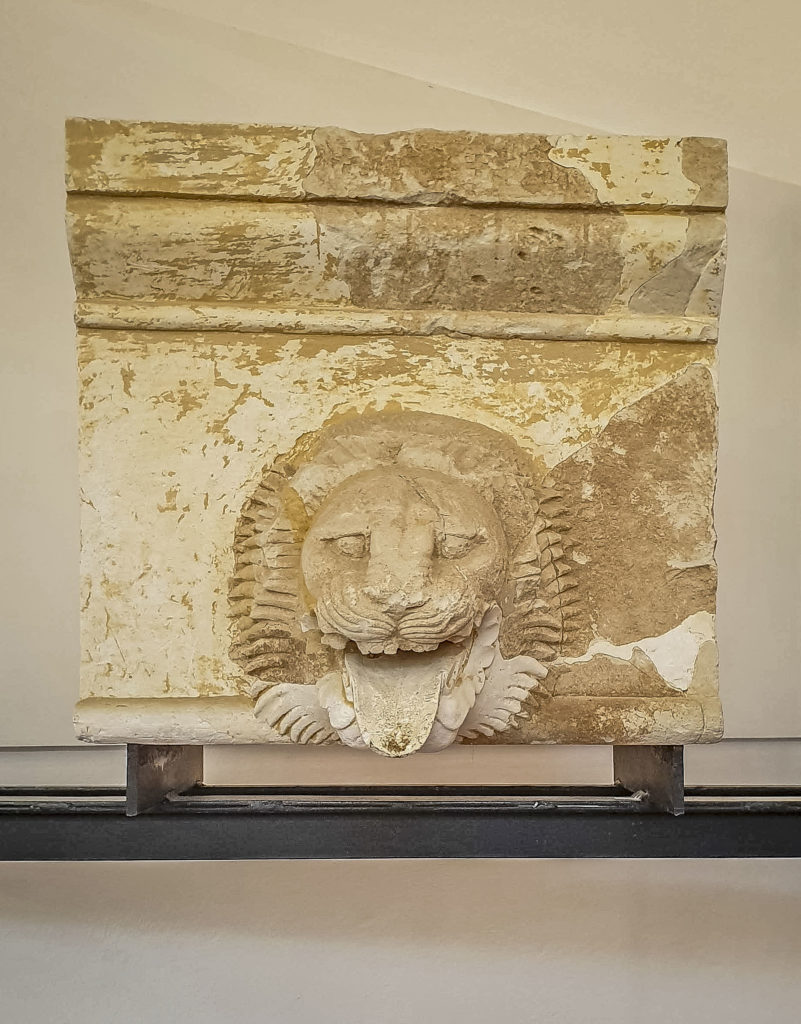The remains of the Temple of Demeter are located in San Biagio, covered by the church of the same name, on the slope to the east of the
Rupe Atenea
.
The sacred building can be dated to the first half of the 5th century BC. Like the Temple of Asclepius, Demeter’s temple had no external colonnade: the building consisted of a simple cella (shrine), preceded by a
pronaos
with two columns.
The
basement
of the temple, partly still preserved, was 30 metres long and 13 metres wide.
The parts that can still be seen, alongside a portion of the outer walls of the cella (shrine), were incorporated into the structure of the
church of San Biagio
(St. Blaise). Outside the church, on the
apse
side, You can still see the
foundations
of the temple’s atrium.
 The roof of the temple had rainwater drainpipes decorated in the shape of lion heads like at the Temple of Heracles.
The roof of the temple had rainwater drainpipes decorated in the shape of lion heads like at the Temple of Heracles.
 The place of worship was originally part of a sacred enclosure together with two round altars found a little further north.
The place of worship was originally part of a sacred enclosure together with two round altars found a little further north.
Numerous votive objects connected to women were also found in the area. For this reason, the traditional hypothesis attributed the rites practised in the building to Demeter.
According to some new research carried out in the early 2000s by the Archaeological Park of the Valley of the Temples, however, the deity worshipped in the temple could have been Artemis, goddess of the hunt and the wilderness.